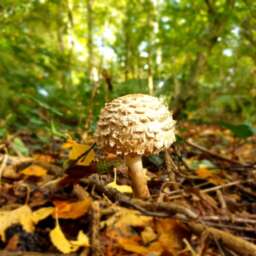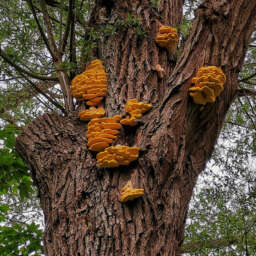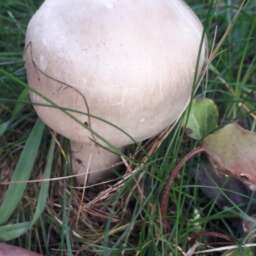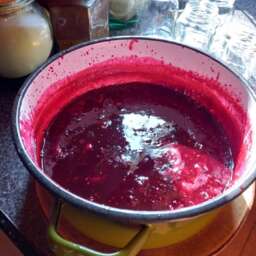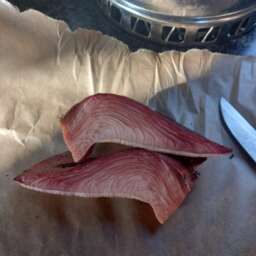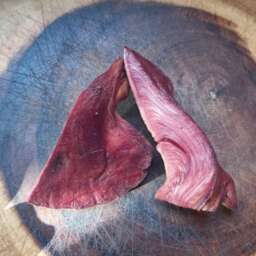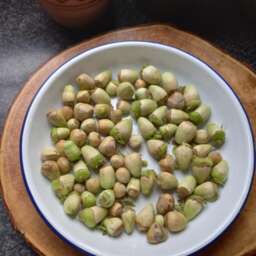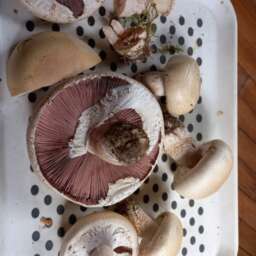Foraging, the act of gathering wild food from nature’s abundant offerings, is a fascinating and rewarding activity.
In the UK, the month of May brings forth a plethora of edible delights, from vibrant wildflowers to succulent mushrooms.
Whether you’re an avid forager or new to this captivating pursuit, this comprehensive guide will walk you through the diverse array of foragable treasures that await you in May.
So put on your walking shoes, grab your foraging basket, and let’s explore the bountiful delights of foraging in the UK this spring!
Wild Garlic (Allium ursinum)

May is the perfect time to seek out the aromatic leaves and white blossoms of wild garlic (Ransoms).
Often found in damp woodland areas, wild garlic adds a pungent and garlicky flavour to various dishes.
The tender leaves can be used to make pesto, soups, or added to salads.
Just be sure to positively identify it by its distinct garlic smell and lily-of-the-valley-like flowers.
Stinging Nettles (Urtica dioica)

While their stinging reputation may deter some, stinging nettles offer a wealth of culinary possibilities.
Packed with nutrients, these versatile greens can be harvested throughout May.
Remember to wear gloves when picking them and choose young, tender leaves.
Once cooked, they lose their sting and can be used in soups, teas, or even as a substitute for spinach in various recipes.
Elderflowers (Sambucus nigra)

May heralds the arrival of the fragrant and delicate elderflowers.
These creamy-white blossoms are often found on the elder tree and are used to infuse syrups, cordials, and even sparkling beverages.
The floral and slightly sweet flavour of elderflowers can be a delightful addition to cakes, fritters, and desserts.
Ensure you harvest the flowers during dry weather for the best flavour
Morel Mushrooms (Morchella species)

May is a peak time for foraging morel mushrooms, and they are highly prized among mushroom enthusiasts.
These distinctive, honeycomb-textured mushrooms have a rich, earthy flavour that pairs well with creamy sauces or in risottos.
Morels tend to grow in woodland areas, particularly near elm, ash, and apple trees.
Exercise caution when identifying them, as there are poisonous look-alike species.
Hawthorn Leaves and Flowers (Crataegus species)

The blossoming hawthorn trees in May offer a double treat. The young leaves have a unique flavour that can be used in salads or cooked as a vegetable.
The fragrant white flowers, known as “Mayflowers,” can be infused in syrups or used to add a subtle floral note to baked goods.
Additionally, the hawthorn berries, which appear later in the year, are rich in antioxidants and can be harvested in the autumn.
Dandelion (Taraxacum officinale)

Although often dismissed as a pesky weed, dandelions have a range of culinary applications.
The young leaves can be harvested in May and used in salads or sautéed as a nutrient-rich side dish.
Dandelion flowers can be transformed into delightful and flavourful syrups, wines, or even infused into oils.
Ensure you pick dandelions from an area free from pesticides and contamination.
Wild Strawberries (Fragaria vesca)

May marks the beginning of the wild strawberry season, and there’s nothing quite like the sweet and aromatic taste of these tiny fruits.
Keep an eye out for them in woodland clearings, hedgerows, or meadows.
Enjoy them fresh, as a topping for desserts, or in jams and preserves.
Common Sorrel (Rumex acetosa)

Common Sorrel is a perennial herb with distinct arrow-shaped leaves that add a tangy and lemony flavour to dishes.
Found in grasslands, meadows, or along riverbanks, this herb can be harvested throughout May.
Use the young leaves sparingly in salads or as a zesty addition to soups, sauces, or omelettes.
Foraging in the UK during the month of May is a captivating experience that allows us to engage with nature, explore our surroundings, and savour the abundance of wild edibles.
From the pungent aroma of wild garlic to the delicate flavours of elderflowers, the culinary possibilities are endless.
By responsibly foraging and respecting the environment, we can enjoy the freshest and most unique ingredients while fostering a deeper connection to the natural world.
What are you foraging this May? Tell us or even better show us in the comments below.




